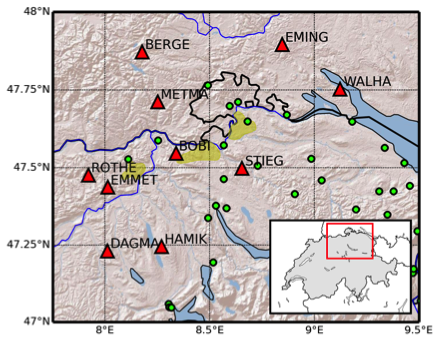Drücken Sie die Tabulatortaste um den Bildschirmleser Modus zu aktivieren
Der Seiteninhalt beginnt hier
Nagra Station Characterization
Poggi, V., Keller, L. and Fäh, D. (2014). The new broadband seismic network in Northern Switzerland: Site characterization. Nagra Arbeitsbericht NAB, 15-54.
Dal Moro, G., Keller, L. and Poggi, V. (2015). A comprehensive seismic characterisation via multi-component analysis of active and passive data. First Break 33(9), 45-53.
